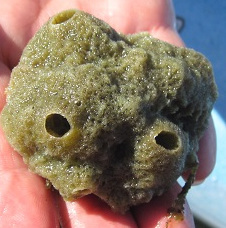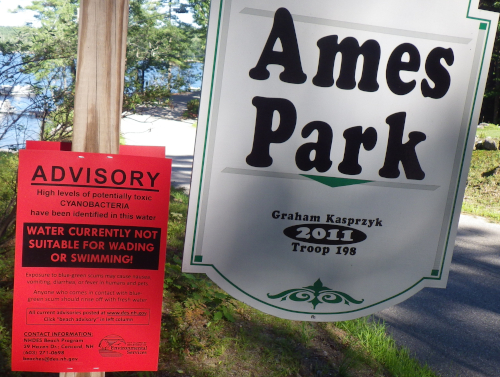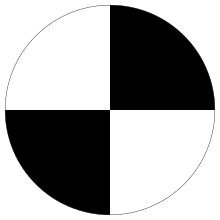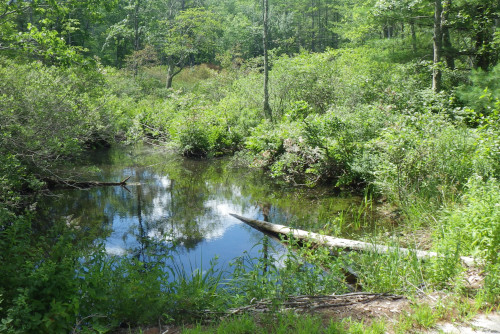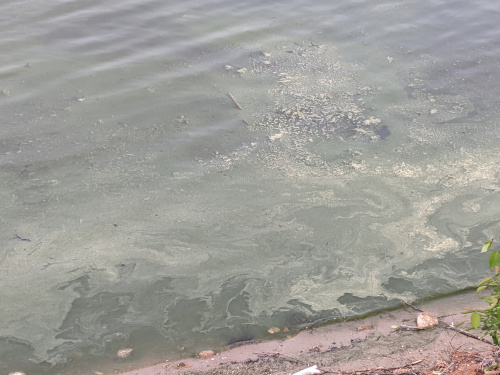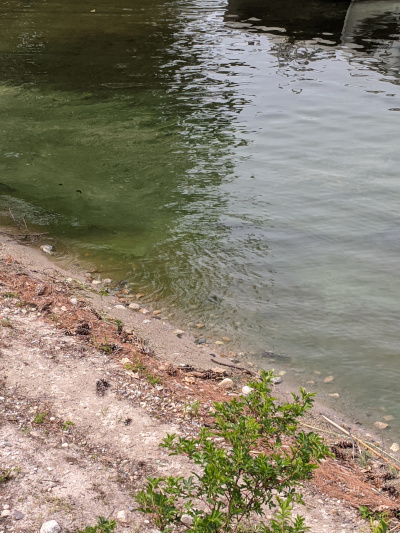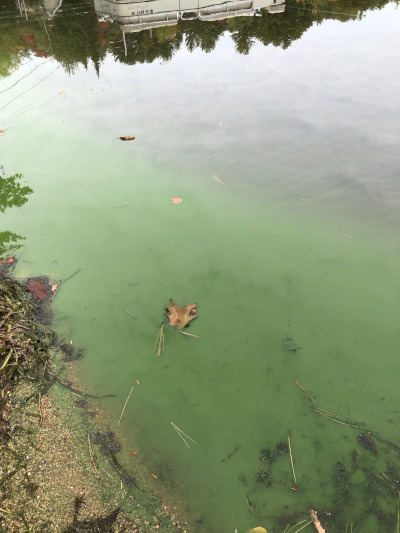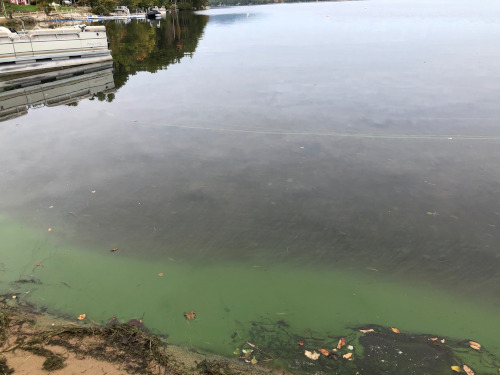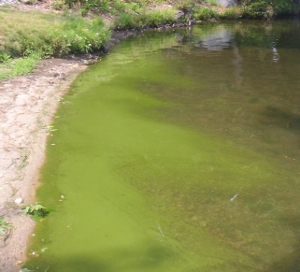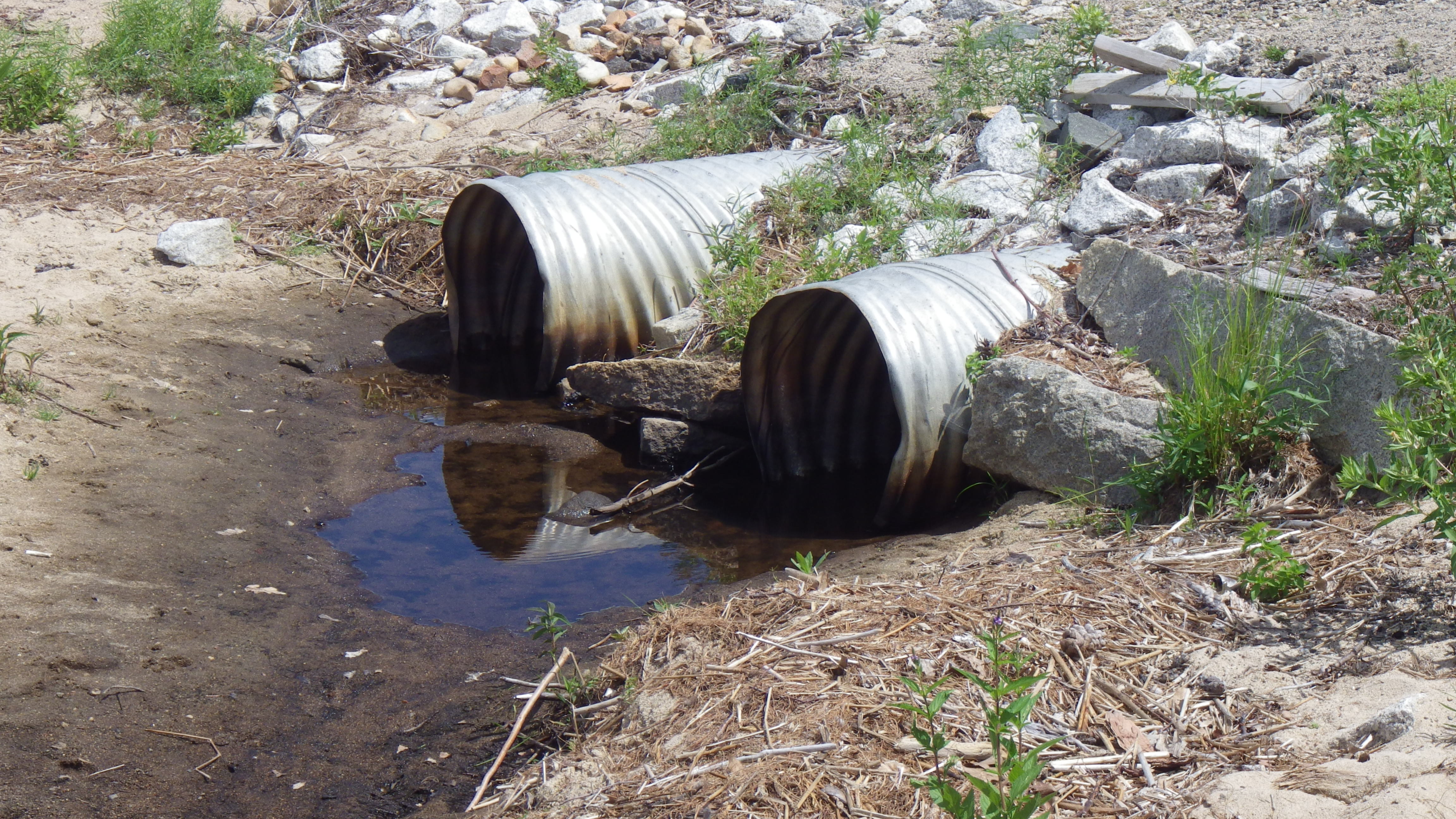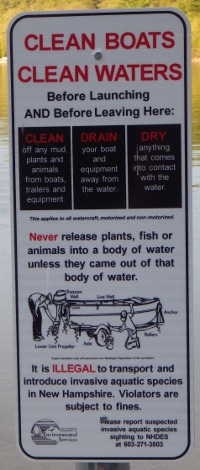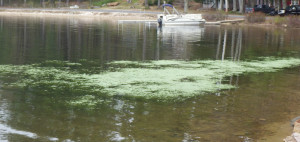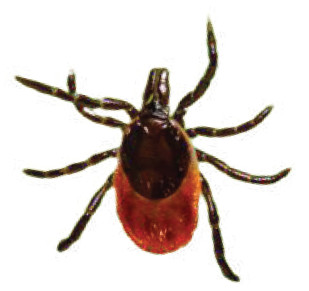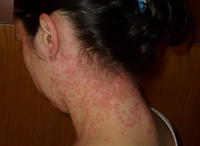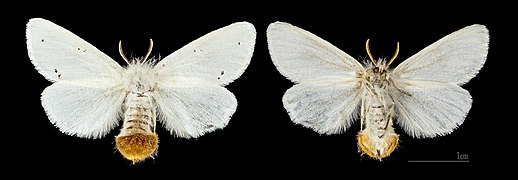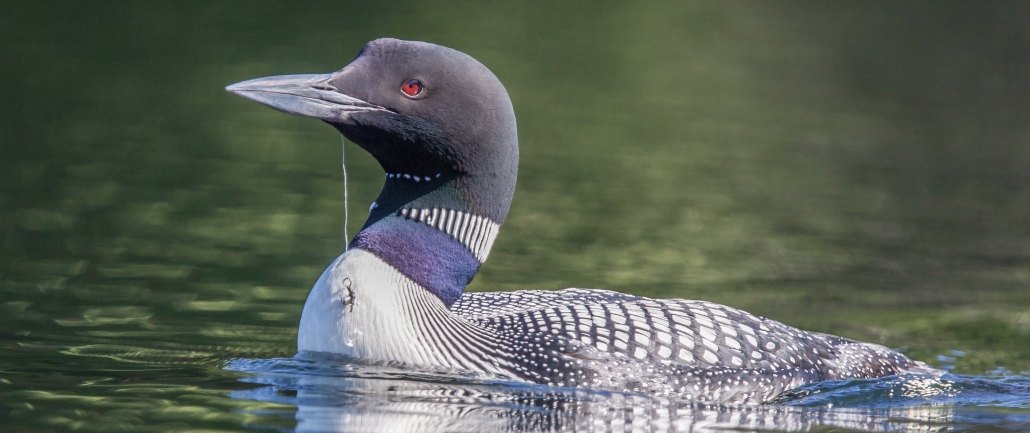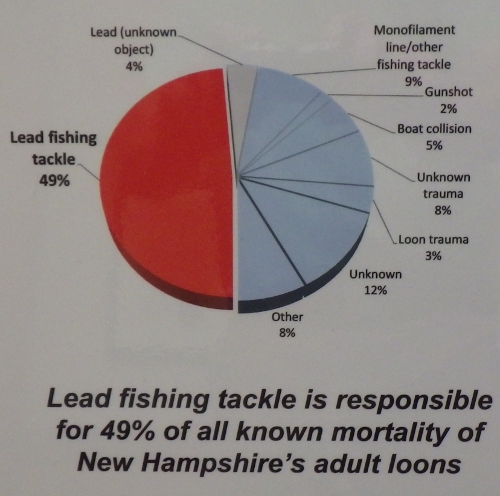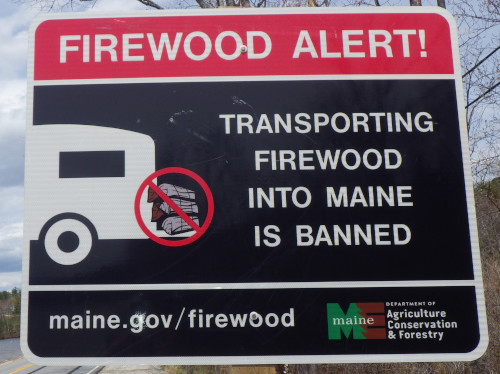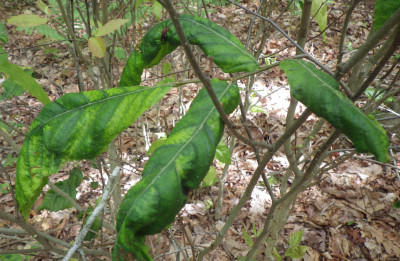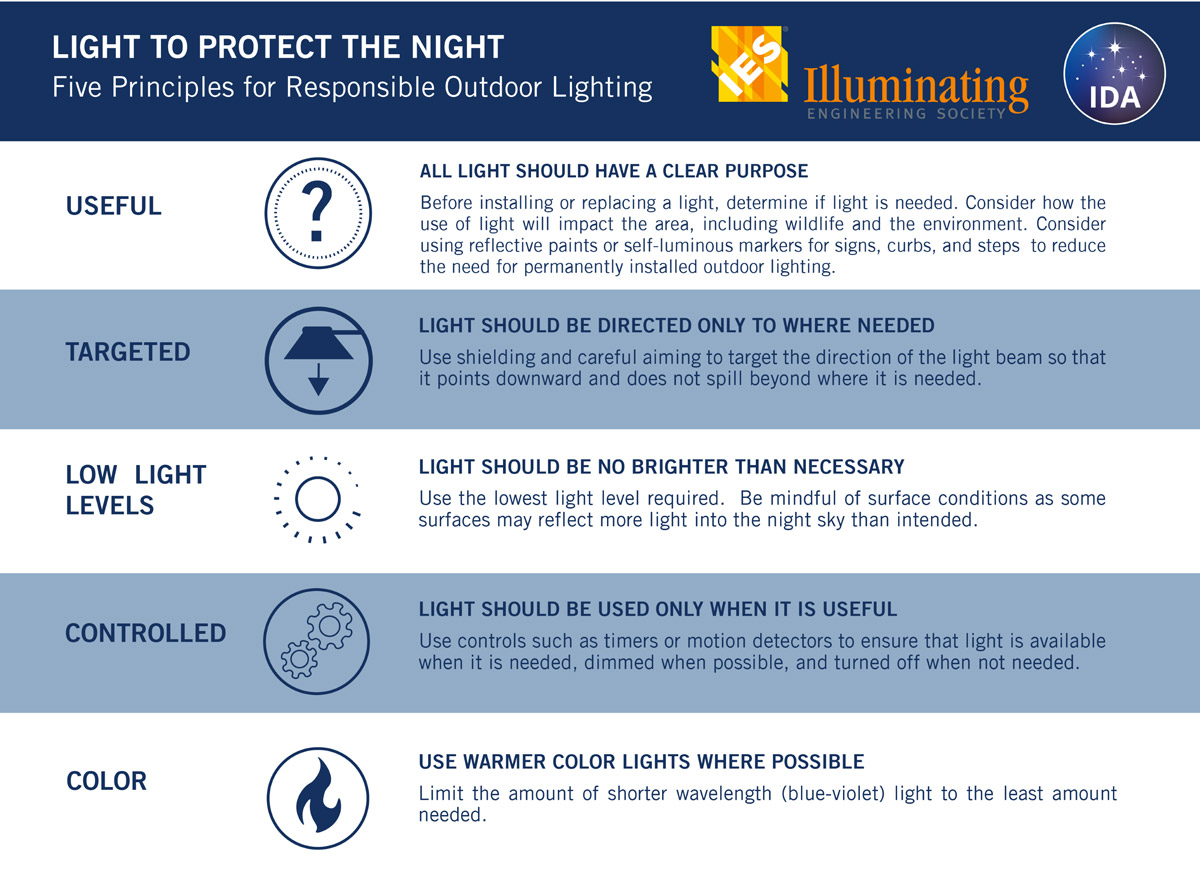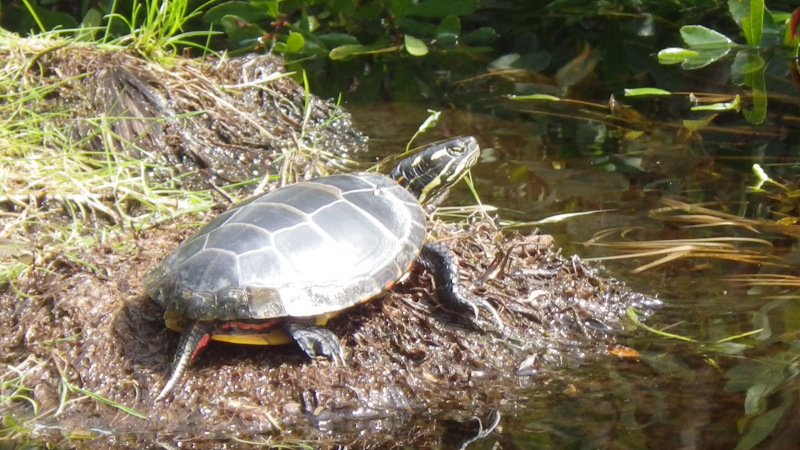Water Quality Monitoring of Province Lake
Effingham & Wakefield, New Hampshire, and Parsonsfield, Maine
2021 Report - Published Online on July 28, 2022
Sponsored by:The Carriage House |
(1) 2021 was the 30th year of water quality monitoring conducted at Province Lake. The first 23 years of monitoring were conducted as part of the New Hampshire Volunteer Lake Assessment Program (VLAP). In 2014, the Province Lake Association (PLA) switched to the University of New Hampshire (UNH) Lakes Lay Monitoring Program (LLMP). While making this change had multiple benefits, the downside is that the 23-year continuous record of consistent analyses by VLAP has been broken, so data are not always comparable. See the 2015 report for details of the impact, as specifically described by Sara Steiner, NH DES VLAP Coordinator, and the chlorophyll-a section below for an example. A much bigger impact will be due to the lost year of data from 2020, when no sampling of Province Lake was conducted due to pandemic restrictions. The UNH lab was closed for routine chemical analysis for lake monitoring. There was no reason that Secchi readings could not have continued, since they can be done by one person, all alone, but this was not done on Province Lake in 2020. See last year's report for a statement from the PLA.
The deep spot, standard inlets, and lake outlet were sampled 4 times (June through September) in 2021. Several other places were sampled 1 or 2 times, presumably for a particular study. The PLA partners with UNH LLMP and Bob Craycraft for the water quality work. PLA members assist in the coordination and collection of water samples, including providing boats to access the lake site. PLA membership dues finance the water sampling and lab analysis. Without PLA member support, this work would not be possible.
I obtained the 2021 data for analysis directly from Bob Craycraft of UNH Cooperative Extension. Since they send the data to NH Department of Environmental Services (DES) for their Environmental Monitoring Database (EMD), all data are public information.
Many of the terms in this report include hyperlinks to related web sites. By clicking on most of the underlined terms, you can access additional information. Clicking on most photos will get you a large photo with wider angle and higher resolution. To get back to the report from a photo, click the back arrow on your browser or [ALT]+[←] on your keyboard.
Use this menu to jump to a particular topic:
Overall Summary
- Water transparency was good at 2.90 meters (9.5 feet), about a foot more than in 2019.
- Province Lake had 3 cyanobacteriablooms in 2021, as reported by the PLA via their Alert emails. This was subsequent to
having had no significant reported blooms in 2020. The appearance of blooms has been sporadic from year to year since their emergence in
modern times for 4 years in a row, starting in September 2010.
WARNING: Since Province Lake has a history of cyanobacteria blooms of varying severity, it is advisable to have a look at the water each time you or your children plan to swim. We’ve been mostly lucky lately, but caution is always advisable. Since a cyanobacteria bloom is readily visible, if you don't see it, swimming is probably safe. If a heavy bloom has just occurred, you might want to wait an extra day or two after it has cleared before swimming.
An excellent source of information about cyanobacteria is this DES web site. - Average phosphorus concentrations stayed the same as in 2019 in the upper layer of the lake and decreased about 10% in the lower layer. Chlorophyll-a decreased from 2019 to concentrations slightly above 2018. These are all good results.
- The biggest surprise in the 2021 data was that the surface layer of the lake increased in acidity, with its pH dropping to its lowest value since 2008. The lower layer pH dropped to its lowest value since 2014. Even so, the pH's still are in the "ideal for fish" range, so are not problematic.
Details
This section provides a more detailed look at the 2021 UNH LLMP water quality data for Province Lake.
1. Water transparency (a measure of how deep you can see into the water) was an average of 2.90 meters (9.5 feet) in the deepest part of the lake, an increase of 12 inches from 2019. The 2021 average transparency fits in with the cluster of good transparencies we have had since 2012 that followed many years of mostly slowly degrading transparencies. The anomaly was 2019.
Of course, we have no information about the transparency in 2020. In an attempt to head off any future data gaps, I created a Province Lake Secchi Club in 2021 and asked for volunteers to take readings from their boats. My hope was to create a more extensive database of Secchi readings, not dependent on a single PLA volunteer. I do not have a boat, so the success of this effort was wholly dependent upon the Province Lake community obtaining the equipment and taking the readings. While I received several messages of support and help with a computer-fillable version of the data form, I have not to date received a single completed datasheet.
Please note that I am reporting the transparency that is measured without a viewscope because it represents how most people actually observe the lake. The viewscope method represents how you would see the lake through a diving mask or swim goggles. For comparison, the average 2021 viewscope transparency was 3.58 meters (11.7 feet), an increase of 13 inches from 2019. The statewide median transparency is 3.2 meters (10.5 feet), without a viewscope. We have a shallow lake, so sediments are easily stirred up, therefore we expect it to be below the state average. The deepest part of the lake is only 16 feet (4.8 meters) deep, variable with the lake level, as shown on the NH bathymetric chart.
2. Chlorophyll-a concentrations are used to indicate the average amount of algae (2) in the lake. The 2021 chlorophyll-a concentrations decreased from the 2019 average of 3.70 micrograms per liter (µg/L), to a concentration that is slightly above the average concentration of 2018.
I started this report mentioning the existence of inconsistencies of data transitioning from VLAP to UNH LLMP. I have gotten pushback, but chlorophyll-a is a good example of this. UNH samples chlorophyll-a two different ways, which can give two different answers. In 2019, they matched, so no problem. The 2021 averages were 3.21 and 3.37 µg/L. Which is the right one to compare to VLAP data? I don't know. The biggest discrepancy was a difference of 1.57 µg/L in 2014. The average of the two 2021 averages (about 3.3 µg/L) fell below 16 of the 23 averages during the VLAP years (1991-2013), so this is good.
The two 2021 average concentration are only 70-74% of the average amount that New Hampshire lakes had. Happily, Province Lake has been below the current NH median chlorophyll-a of 4.58 µg/L since 2005 and has only exceeded it 4 times in 30 years of data (if you ignore the 4.73 µg/L concentration measured by one of the UNH methods in 2014). A low level is good because dying algae forms the brown floating bottom masses in July and August. The algae masses settle loosely on the bottom when the lake is still and cloud the water when wind or boat wakes stir things up. This may be unsightly, but it is not harmful to people or their animals.
3. Phosphorus is a nutrient required for photosynthesizing organism growth and is typically thought to be the nutrient whose availability most limits plant, algae, and cyanobacteria growth in NH lakes. In 2021, the average phosphorus levels in the upper water layer (sampled at 2.0 meters depth) stayed essentially the same as in 2019, with about half of the 29 prior years of data each being either higher or lower. The 2021 level exceeds that in 50% of the lakes in NH, as it usually has.
The total phosphorus concentrations over the years have been high enough to earn Province Lake a "Marginal Impairment" listing in the "Aquatic life" use category, ever since NH DES started issuing listings of impairments for phosphorus and chlorophyll-a in 2010. This was first explained in 2013's Issue #5 of the Province Lake Water Newsletter. Since there were no new data to analyze last year, the 2020 report had the time and space to explain the whole business of Impairments. I tried to make it as readable as possible, so please have a look, if you have not already done so.
In the lower water layer (sampled at 4.0 meters depth), the average phosphorus levels were 11% lower than in 2019. Since those measurements started, 13 years have been higher and only 6 years have been lower. This is good. During 2021, they were < 1% higher than those measured at 2.0 meters, so essentially equal.
The phosphorus concentration at the Rt. 153 Inlet (in NH, near the state line) dropped considerably (18%) from its 2019 level. That made this the 6th lowest concentration in 30 years of data, so is excellent. My speculation regarding this dramatic reduction gives credit to the beavers. In 2021, the culvert under Lost Mile Road through which the stream (also known as the South River) flows was dammed up by beavers, causing the large wetland upstream to be transformed into a large shallow pond. See the photos presented at the bottom of the 2020 report HERE and HERE. This pond allowed phosphorus-carrying sediments to settle out and be captured by the vegetation. The reduced flow in the stream reduced its ability to erode and transport sediments, as well as allowing sediments to settle out in the lower reaches of the stream, beside Rt. 153, before they could enter Province Lake.
The average phosphorus concentration measured at the Island Inlet on Bonnyman Road increased 25% from its record low in 2019, yet it was still the 4th lowest in 30 years of data. This is good. The inland side of the Island Inlet is shown here. The sample is taken where the water flows into the culvert to pass under Bonnyman Road. Volunteers work to make sure this culvert does not stay dammed up by beavers, which could result in water flowing over the road surface.
Phosphorus clings to sediments, so soil erosion and sediment disturbance can increase phosphorus concentrations. Both inlet locations have had a history of elevated and fluctuating total phosphorus concentration. The relatively low phosphorus concentrations in both inlets certainly contributed to stabilizing the phosphorus levels at the deep spot of the lake. The erosion control and septic system remediation efforts of the PLA and Acton Wakefield Watersheds Association (AWWA) in recent years are also likely to have helped keep phosphorus levels in the lake from increasing.
It is important to educate lake users on the importance of operating jet skis and boats at slow speeds in shallow areas to minimize disturbance to sediments and vegetation. The use of wake-surfing boats on Province Lake will be of no help to protecting the water quality in our shallow water body. Churning up the bottom sediments releases phosphorus, which promotes algae, weed, and cyanobacteria growth; increases turbidity (scattering of light by suspended particles), and decreases clarity.
4. Chlorophyll-a versus Phosphorus: See the 2018 report for a statistical analysis of the relationship between Chlorophyll-a and Phosphorus.
5. We had never sampled Province Lake for nitrogen as part of VLAP, but it is included in the UNH Lakes Lay Monitoring Program. A 1987 DES Lake Assessment Program survey had concluded that plant and algae growth in Province Lake is actually limited by the amount of nitrogen, rather than by phosphorus. Now that nitrogen is being monitored, we have the potential to eventually correlate nitrogen levels with algae growth, as measured by chlorophyll-a. At least 10 years of data are required before a meaningful statistical analysis can be performed. Meanwhile, it is important to be sure nitrogen-containing fertilizers are not used near the shoreline, or streams or ditches feeding the lake, and to be sure septic systems are operating properly. It would also be a tiny help not to pee in the lake while swimming; each time adds about 40 milligrams of nitrogen to the water.
If you have a lush, bright green lawn, it could be a sign to your neighbors and the community that you are fertilizing your lawn, possibly making a significant contribution of nitrogen and/or phosphorus to the lake. On the other hand, if you pump water directly out of the lake to irrigate your lawn, you can contribute to improving the lake water quality by removing nutrients from the water and putting them to use on your lawn; I have been told that some people actually do this here.
6. Province Lake had 3 cyanobacteria blooms in 2021, as reported by the PLA via their Alert emails. Having timely access to such emails is a good reason to join the PLA. Fortunately, none of the blooms fell during peak swimming season. Details of the 3 blooms are included in the following table:
| Bloom Dates | PLA Cyanobacteria Bloom Alert Email Excerpts |
|---|---|
| 6/2 - 6/4/2021 |
"It can look like green mats or you may see small flecks or stringers, which you may think is pollen." This rated a mention in the "June 11, 2021: NHDES Beach Bacteria and Cyanobacterial Bloom Advisory Newsletter" |
| 10/6 – 10/19/2021 |
"… (along Bonnyman Rd and Bailey Point). It can look like green ribbons, 'pea soup' or you may see small flecks in the water column." October 8, 2021 NH DES press release: "Cyanobacteria Bloom Observed on Province Lake" |
| 11/7 – 11/21/2021 |
"…we are experiencing intermittent and sporadic cyanobacteria blooms at Province Lake. They have been coming and going along the shoreline
of Bonnyman and Point Roads and Lake Shore Dr. It is appearing as green stringers, surface blobs and cloudy green water. This has occurred
over the weekend. We suspect it will likely continue until conditions become unfavorable for its development." No photos provided. Province Lake included in November 9, 2021 NH DES press release: "State Warns of Late Season Cyanobacteria Blooms in New Hampshire". |
Province Lake had experienced its first confirmed cyanobacteria bloom since the 1970's in September 2010, then had blooms 4 years in a row (2010-2013). Fortunately, no sightings worthy of a Lake Warning then occurred from 2014 through 2016. Sporadic blooms have occurred since then. The continuing blooms mean we are susceptible to having them in future years. When a cyanobacteria bloom is in progress (see description below), there is no way for us to know if it is toxic or not, so we need to act as if it were toxic. Therefore, it is important to know what a bloom looks like and act accordingly. If a cyanobacteria bloom is suspected, there may be Facebook postings and/or PLA email alerts issued.
In welcome state action, according to NH Lakes, NH House Bill 1066 has been signed into law. It requires the commissioner of DES to prepare a plan relative to cyanobacterial blooms in New Hampshire. In addition to the plan, the bill creates an advisory committee to DES made up of expert stakeholders from state agencies, nonprofits, the medical, veterinary and scientific communities, and members of local lake and watershed associations. It provides $30,000 to fund these efforts.
What a Cyanobacteria Bloom Looks Like: Large concentrations of cyanobacteria (a bloom) would be seen as a green, blue, or pink surface scum in a section of the lake. This is different from the tan or yellowish foam seen sometimes after strong winds. If present in large amounts, cyanobacteria can be toxic to animals and humans. There is some evidence connecting it with increased risk of ALS. While recreational exposure to cyanobacteria toxins is a major concern of NH DES, there has been only one documented case of cyanotoxin-related illness in New Hampshire (See the 2020 report for details). Photo by NH DES, courtesy of the PLA, 2012.
If you think you are seeing a cyanobacteria bloom, stay out of the water and especially, keep your children and pets out of the water. Call the NH DES Cyanobacteria Hotline at (603) 848-8094 or email HAB@des.nh.gov to describe what you see. Then call the PLA's phone number, (207) 200-3243, so a sample can be promptly collected for potential NH DES analysis. Get more information about cyanobacteria at this NH DES web site. If suspicious, during "swim season" NH DES may sample and analyze the suspected bloom, then post a Lake Warning if there is any danger. They will monitor the situation and remove the postings when all is clear.
According to DES factsheet "Phosphorus: Too much of a good thing", research indicates that cyanobacteria numbers increase as phosphorus in the water increases. Therefore, it suggests the best ways to try to minimize cyanobacteria blooms are to eliminate fertilizer use on lawns, to keep the lake shore natural, to protect against shoreline erosion, and to properly maintain septic systems to prevent leakage. These measures will become more important as the pressure of human population growth results in more land being cleared and developed in the Province Lake watershed. The specific causes of our own blooms is unknown, but preventing future blooms is a major goal of the Province Lake Watershed Management Plan.
7. A pH between 6.5 to 7.0 is ideal for fish, according to VLAP. pH is the measure of acidity, where 7.00 is neutral, below 7 is acidic, and above 7 is basic. Lab measurements averaged 6.53 in the upper layers and 6.50 in the lower layers, as opposed to 7.16 and 6.94, respectively, in 2019. The state average in the upper layers is 6.6. The lake's pH was significantly more acidic than in 2019. Besides the average dropping by 0.62 pH units, surprisingly, each individual measurement fell below 6.7 pH units.
The average lab-measured pH at the Rt. 153 inlet was 5.62, much less than 2019's pH of 6.22. In fact, 5.62 is the lowest, most acidic average pH on record at this location since sampling began in 1991. This was especially surprising since readings had generally been trending towards being less acidic in 2015-2019, based on lab analyses. This inlet drains a large wetland, which naturally has a high concentration of tannic, humic, and fulvic acids from decomposition of plant life, which give it the color of tea and reduce its pH. The flow reduction caused by the Lost Mile Road beaver dam may be partially responsible, by reducing the dilution of the natural acids created in the wetlands in the lower reaches of the stream.
The average pH at the Island Inlet was 5.93, significantly more acidic than the 6.54 pH of 2019 and tied with 2008 for the most acidic year. This inlet also drains a wetland.
The greatly increased acidity (decreased pH) of these two inlets is consistent with the measured increase in the acidity in the deep spot of the lake. However, I think the relatively low flows from these inlets means that they are unlikely to be the cause of the measured lake acidification. Rather, all of them would likely be caused by the same outside source, an increase in acid precipitation. However, I could not find much documentation about precipitation pH, other than this press release from the Adirondack Council in October 2019, so this remains speculation on my part. The only thing I can say for sure is that we have no meaningful local control over the pH of the lake. You can read more about it in the NH DES factsheets: "Acid Rain" and "Acid Rain (Deposition) Impacting New Hampshire's Ecosystems" (both dated 2019).
Exceedances of the Water Quality Criteria for pH are defined as: pH < 6.5 or pH > 8.0. The state average pH of 6.6 is barely better than the 6.5 criterion, therefore a large number of New Hampshire water bodies are listed as "Slight impairment - marginal condition" in the "Aquatic life" use category for pH.
8. Province Lake was listed in 2008 as impaired for mercury in fish and it remains so with all other surface waters in New Hampshire (3). Two fish caught from Province Lake in 2009 were tested in 2010 and shown to have safe mercury levels, but just two fish cannot be assumed to be sufficiently representative of all fish in the lake, especially since 13 years have passed since those fish were caught. It's better to be cautious and do catch-and-release, which makes for better fishing anyway, not to mention leaving food for the loons and bald eagles. See the Fish Consumption section of the 2020 report for more information on this subject. It's probably about time for someone who can provide more fish to contact NH DES about testing some more fish. (Please provide me with the results letter so that the community can see it.)
9. No dissolved oxygen (DO) data were provided by UNH for 2021. Generally, DO levels in Province Lake have been satisfactory, so the lack of 2021 data is not of concern. A high oxygen level is a sign of the lake's overall good health. Given Province Lake's large area and shallow depth, it tends to be well-aerated by wind and boats. I encourage powered watercraft to operate fast far from the shore to mix the deep waters and boost the oxygen concentration, while minimizing their speed and use in the shallows.
10. Much E. coli bacteria testing was done in 2013 as part of the study for the Province Lake Watershed Management Plan (see the 2013 supplementary report). Despite some very localized problems with E. coli bacteria in 2013, no E. coli sampling has been performed since then. According to NH DES, if funding and interest exist for further E. coli testing, it can be arranged. As described in the "Secondary Contact Recreation (boating)" section of the 2020 report, new E. coli testing will be necessary to restore Province Lake's "2-G" best rating from its current "3-ND" rating.
Despite the lack of current concerns, it only makes sense that everyone should still stay out of the stream that flows from the golf course and drains into Province Lake at the beach along Rt. 153 near Shore Acres Road in Maine, shown here during a dry period in July 2020. Click photo for wider angle. If you see that water is flowing into the lake at that location, it would be best to avoid swimming too close to it. Canada geese grazing the golf course are almost certainly the source of the E. coli measured in 2013, although that reason does not make the E. coli concentrations safe. Generally, it is probably best to avoid swimming in any streams as they flow into the lake, since even those with E. coli levels considered safe had measurable amounts of bacteria in 2013. Of course, it is always best to avoid swallowing lake water under any circumstances.
11. Scorecards and regulatory documents: The 2020 report was primarily about regulatory documents, summarized as succinctly as possible, so I recommend going there to read all about it. The NH DES web site was undergoing maintenance and harder to navigate, but I did eventually find the current scorecard, which is labeled "2020/2022" (not clear what the dual year designation means). However, a look at the page for Province Lake alone shows that all classifications are identical to those shown in the "2020" column chart in my 2020 report. This page was extracted from the full watershed scorecard. Please see my 2020 report for a full discussion. In the downloadable detailed data, the notes for cyanobacteria were identical to those listed in the Cyanobacteria table of my 2020 report.
Something different that came to my attention is the Environmental Protection Agency’s National Lakes Assessment 2017 (NLA 2017), published in June 2022, but named for the fact that the lake sampling all occurred in 2017. It is a very readable web report to dip into. Out of 1005 lakes sampled nationwide, 11 were in NH and 24 were in Maine. Province Lake was not one of the sampled lakes, per Exhibit 3 of NLA 2017. NLA 2017 is accompanied by a lengthy Technical Support Document (TSD).
Independent of the NH regulatory documents and official designations, it is interesting to compare the recent Province Lake results to the criteria listed in NLA 2017 and its TSD. For the sake of reading NLA 2017, please note that Province Lake falls within the Northern Appalachian Region (NAP) and the criteria listed in the tables below are mostly specific to NAP.
Chlorophyll-a has its own criteria and is also used as a simple indicator of trophic state. This table shows that Province Lake has a Good rating for chlorophyll-a and that it falls towards the good end of being Mesotrophic. See the bottom of the 2012 Supplemental Report for a discussion of trophic state.
Province Lake's rating places it among the 33% of US lakes and 62% of NAP lakes that are also Good.
Province Lake’s trophic status per NLA 2017 places it among the 20% of US lakes that are also "Mesotrophic".
Phosphorus is sampled for in 2 different ways at Province Lake. The discrete samples at 2 and 4 meters each gave results that met the criteria for Good. The composite sample, which collects a continuous sample through the entire water column, gave results that just slipped beyond the Good criterion. Anything between Good and Poor is considered Fair in the NLA. 41% of US lakes are rated Good.
The Nitrogen concentration of Province Lake is safely in the Good range, joining 39% of US lakes.
Dissolved Oxygen was best measured in Province Lake in 2019 and not at all in 2021, therefore the 2019 mean was used for comparison. Our rating is unequivocally Good. It joins 75% of US lakes.
12. European water-starwort: Callitriche stagnalis, commonly known as either "pond water-starwort" or "European water-starwort", appeared in Province Lake during 2014 and got its first real attention in 2015. It is not native to North America and is ranked "1-Severely invasive" in the Maine Natural Areas Program Advisory List of Invasive Plants - 2019, although not yet in New Hampshire. Its dense weed bed is a threat to native plants that might otherwise grow in that spot, and is also an impediment to swimming in that area. There is an extensive detailed report about the appearance of C. stagnalis in Province Lake published on this web site, with the most recent update in the 2019 report. Photo at right was taken on May 8, 2021.
Other Environmental Issues for Province Lake and Its Environs
Maine Forest Tick Survey
Blacklegged Ticks (often incorrectly called Deer Ticks): Everyone is concerned about them, but what do we really know
about them? The 2021 Maine Forest Tick Survey was run by scientists at the
University of Maine and used 150 citizen scientist volunteers to collect ticks across 9 counties of Maine. One volunteer conducted collections
on their property uphill from Taylor City, so we have local data. THIS ARTICLE, reprinted here by
permission of Maine Woodland Owners, describes the survey nicely.
![]() has an excellent monthly newsletter that I highly recommend. You can download the statewide report provided by the volunteer
HERE. It is short, has lots of illustrations, and is very readable.
You can also download the two individual property reports provided by the volunteer HERE and
HERE. Two sites were sampled locally; each report is the composite of three sample dates for each of the sites.
has an excellent monthly newsletter that I highly recommend. You can download the statewide report provided by the volunteer
HERE. It is short, has lots of illustrations, and is very readable.
You can also download the two individual property reports provided by the volunteer HERE and
HERE. Two sites were sampled locally; each report is the composite of three sample dates for each of the sites.
You can read more about blacklegged (deer) ticks at the Maine Woodland Owners tick web page.
In separate, unrelated tick news, you may have heard about how the moose population is being severely impacted by completely different ticks. THIS ARTICLE, also reprinted here by permission of Maine Woodland Owners, describes the situation.
Browntail Moth
Invasive Browntail Moth caterpillars remain a major problem in Coastal Maine. This is not just the typical problem of being bad for trees, but an actual human health issue of shed hairs causing respiratory distress or poison-ivy type rashes. Province Lake is in the "Alert" area of the 2020 Browntail Moth Risk Map, where no detections have been noted. If you find these caterpillars here, the states want to know. You will want to get their advice before doing anything about an infestation, as any contact is hazardous. See the 2018 report for more detailed information. You can learn much more at the following web sites:
Loons and Lead
Most birds swallow small stones to help them digest food. Many fishing sinkers fall into the size range that loons prefer. Being fish-eaters, loons have a lower stomach pH than waterfowl that eat vegetation, such as geese and most ducks. The lower pH more effectively dissolves the lead, which then kills the bird. Poisoning from ingestion of lead objects has been identified as the #1 cause of loon deaths in fresh water. Therefore, most lead fishing tackle has been outlawed so, if you still own any lead fishing gear, please stop using it immediately. For definitive and up to date information on this subject, please see the Loon Preservation Committee's Loons and Lead web page. Read the Loon Center's full poster on the subject. The PLA arranged for lead gear to be collected at their Annual Meeting on 7/23/2022 (PLA photo).
Earthworms
If you bring up or buy earthworms to use as fishing bait, you absolutely should not release them on the ground, since they are not native to New England and they can eat up the
leaf litter and disturb the soil. Many native plants, such as lady slippers, require undisturbed soil to live.
HERE is a new article, reprinted by permission of Maine Woodland Owners, that describes the threat that the more recently arrived and more aggressive
Asian "jumping worms" pose to our forests. It begins:
"In Maine, all earthworms are non-native. Our forests have developed without them since the time of glaciers, so when earthworms are present, negative outcomes can result."
HERE is the Maine Jumping Worm page. The icon at left will take you to a Claymation video about jumping worms. The icon at right will take you to a live action video (my preference). Prior years' water quality reports, back to the 2011 report, also provide a variety of information about earthworm threats.
If you have worms for fishing, either use them up or give them to someone else who can use them. Dumping them in the lake is insufficient to dispose of them. Apparently, they can swim to shore and survive. Freezing worms for a few weeks or soaking them in rubbing alcohol (isopropanol) or ethanol (such as vodka) is most effective. If you find euthanizing them in alcohol to be too upsetting to watch, I have been told by a worm biologist that you can soak them in Epsom's salt solution first to relax them. Any soil you had the worms in can contain eggs or other life stages, so should be treated and not be dumped on the ground either. I find the State recommendation to place them in the trash inadequate, as it does not account for the final destination of your trash. Worms might survive a trip to a landfill and escape into the world from there. You only need a few to escape and cause permanent problems. So kill them! The native plants, tree frogs, toads, salamanders, and other little creatures that live in the woods will thank you!
Destructive Wood Pests
Emerald Ash Borer (EAB) ) is here! I've been warning for years that it is on its way, but the map shows that EAB has arrived and Province Lake is in the EAB Quarantine Area. Click the icon at right for the southern Maine quarantine map, updated 7/1/2022. Once EAB arrives, it cannot be erradicated, only managed. If you happen to have a significant number of ash trees on your property, it would be prudent to discuss management issues with a forester NOW, so that the value of timber can be realized before it is lost.
Beech Leaf Disease (BLD) has not yet reached the Province Lake region, but it has that potential. BLD can kill a tree in just a few years. It has been moving rapidly north along the coast of New England and has made it into Maine. The Province Lake region is probably the best monitored region in northern New England, because I have been surveying it myself for 3 years, but it would be very useful to have others monitor elsewhere. For instance, if you hike away from the lake, you could survey along your favorite trails. If Province Lake is your summer weekend place, you could survey back home where you live. Please see the Beech Leaf Disease Project page to read all about it and to see how submitting surveys has just become easier.
Please always use local firewood, to keep from spreading around EAB and other wood pests. It is illegal to move firewood across most state lines in the Northeast now, and Province Lake is perched on a state line, so be careful to keep out of trouble. See the 2009 report for more details. You can also learn much more at the following web sites:

- NH Bugs - Damaging Insects & Diseases
- Invasive Threats to Maine's Forests and Trees
- Massachusetts Introduced Pests Outreach Project
- "Emerald Ash Borer: Background & Overview of the Green Menace"
Light Pollution is real, with simple solutions.
At Province Lake, we are fortunate that we can see the Milky Way. 99% of the US population lives under light-polluted skies and 80% of Americans cannot see the Milky Way at all. Without big commercial or industrial sources of light pollution nearby, is has been up to individual residents to ruin the night views for themselves and everyone else. If you have a beautiful view from your property, please consider that everyone potentially within that area that you can see, can see you back. That is especially so if you live on a mountainside or beside the lake shore. For people in that area, YOU ARE THE VIEW. It is your civic responsibility to minimize your impact on everyone else's view. If security is your concern, there are myriad options to minimize your impact. Lights on motion sensors can startle someone approaching, as well as alerting you that someone is approaching. It is not difficult to aim your lights downward or shield your lights so that they do not shine directly into the eyes of anyone beyond your property line or immediately adjacent roadway. Consider that if your lights are directly visible from a distant road, possibly miles away, that can serve as an advertisement to roving thieves that you think yours is a property with many valuables worth stealing.
I have teamed up with astronomy professor and local resident Bernie Reim on this project to protect the dark skies we enjoy around Province Lake. I encourage everyone to participate by reading the following principles and taking steps to try to meet them. You and everyone else will benefit. In most cases, you can make great strides with minimal effort. Rather than costing you money, you are sure to have net savings on your electric bill.
Online Resources
I started the Province Lake Water Newsletter in 2013 to cover various topics related to water quality, invasive species, or other issues that have some bearing on the region surrounding Province Lake. I encourage you to sign up for these occasional emails HERE. Signing up gets you the emailed newsletter only and your information will not be shared with anyone. You can easily unsubscribe or resubscribe at any time.
Last year's water quality report is posted HERE. That is the 2020 report, published online on July 23, 2021. Prior year reports going back to 2009 are also posted online for your reference.
There are now at least 1,100 members of the Facebook group called "Province Lake, New Hampshire & Maine" (not affiliated with the any organization), where people interested in the lake and nearby areas can share information. We have made great progress in suppressing posts by the tee shirt salesforce living in Chittagong, Bangladesh, but wish them well. Province Shores Campground and Jolly Roger Village also have Facebook groups primarily for members, and there has been outreach regarding water quality issues by that means. These Facebook groups have been used to post cyanobacteria warnings, official or otherwise.
THANK YOU NOTES: I want to thank Steve Craig for taking the lead on the water sampling activity since 2004. I believe Steve has retired from that role. (Let me know if you are his replacement!) Thank you to Steve, and others who have helped out from time to time!
The PLA partners with University of New Hampshire (UNH) Lakes Lay Monitoring Program (LLMP) and Bob Craycraft for the water quality work. PLA members assist in the coordination and collection of water samples, including providing boats to access the lake site. PLA membership dues finance the water sampling and lab analysis. Without PLA member support, this work would not be possible.
The PLA can always use more volunteers to help with sampling, etc. I have been given permission to say you are more than welcome to contact the PLA directly at president@provincelake.org if you want to help them with water quality work, weed watching, or anything else. If you contact me (at province-lake-water@cox.net) to express interest in volunteering, I will also pass on your information. You do not need to be a member of the PLA to volunteer, and have no obligation to join if you do volunteer, although new or returned members are always welcome.
On a more personal note, I have been actively involved in recruiting volunteers for citizen science projects in the last few years. Locally, this has included the Province Lake Secchi Club and Frog Watch. The Beech Leaf Disease Project covers the entire northeast U.S. My Dark Sky efforts are meant to encourage people around Province Lake to be better neighbors, protect the wildlife (of all sizes) in their immediate vicinity, cut their carbon emissions, and save themselves money on their electric bills, all at the same time. The difficulty I have found in finding people to do anything makes me REALLY appreciate the PLA-associated folks who sample the lake and inlets, patrol the lake as Weed Watchers, maintain the dam, clean up the beaches, and do other activities that benefit the environment and other folks. Please join me in appreciating them, but better yet, please join them in doing something. We will all be better off for it!
Thanks for your interest,
Norm Dudziak, P.E., I.M.
See Province Lake statistics HERE.
Footnotes
- This freshwater sponge was found by Laurie Callahan of the York County Invasive Aquatic Species Project (YCIASP) on August 30, 2016, in Province Lake somewhere along Rt. 153. The out-of-hand photo at right shows it where it was found living on the bottom, about 1.5-2 feet deep. Thanks, Laurie!
- While some still mistakenly use the term "algae" to refer to cyanobacteria, in this report "algae" is only used to refer to true algae. Cyanobacteria are bacteria, not algae; they are not even in the same biological kingdom. Algae are more closely related to YOU than they are to cyanobacteria! Other than both being microscopic cells, they are fundamentally different. See Footnote #2 of 2013 Newsletter #5 for a detailed explanation.
- Note 3 of the "Final- 2008 List of All Impaired or Threatened Waters" stated "all surface waters in New Hampshire are also included on this list due to statewide fish/shellfish consumption advisories because of mercury levels in fish/shellfish tissue." The 2016 list includes a similar note. This issue is further explained in Question 1 of the 2012 Supplemental Report.
Legal Disclaimer: I am a degreed environmental engineer, licensed in Maine and other states, but my communications on this topic are educational
in nature. Due to my professional engineering licenses, I am required to say that this communication does not constitute engineering work, even when
using my engineering knowledge. I do not speak for anyone but myself, in the form of my company,
E and I Services, LLC.
Terms of Use: Anyone is allowed, even encouraged, to link to this page. However, no one is
authorized by the author
or by E and I Services, LLC to copy the content and post it on another web site.
This web site is owned by E and I Services, LLC and has no affiliation with any other organization.
Copyright © 2022 - 2024 by E and I Services, LLC. Copyrights apply to photos resident on this web site, except as noted or if the photos are presented
by linkage to another web site. All rights reserved.


